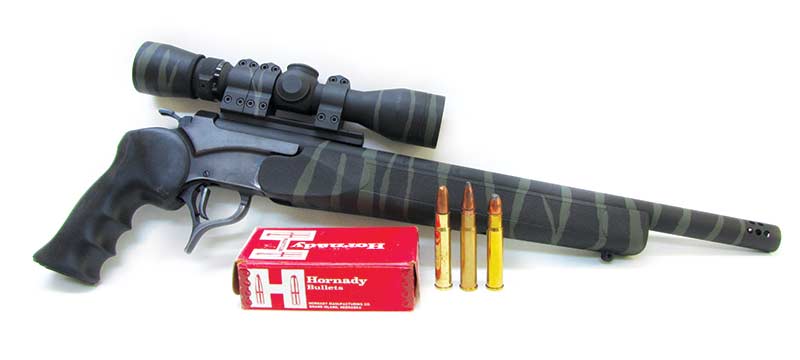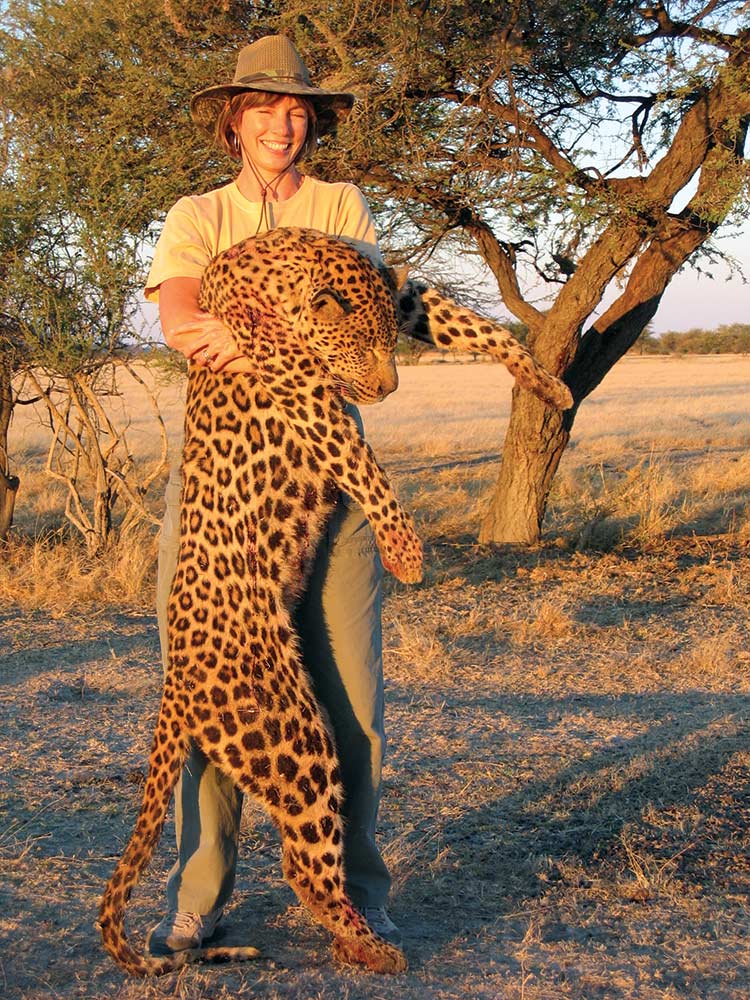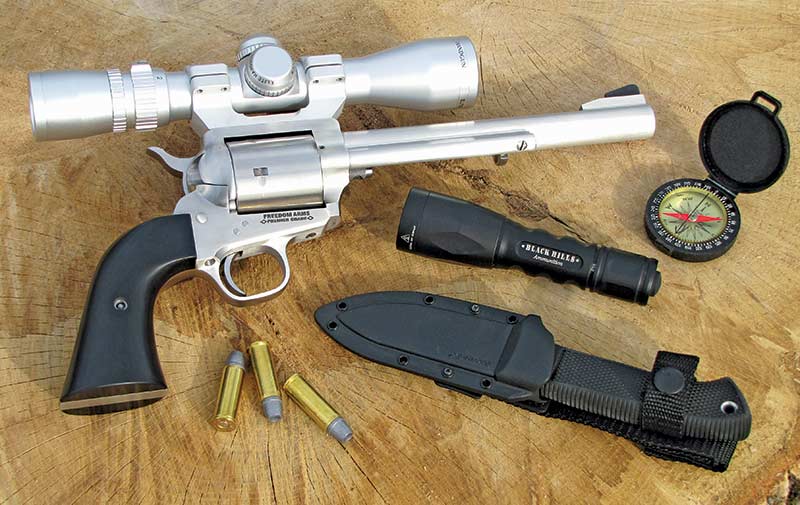Handgun Hunting: Dangerous Game!
A Assumption Of Risk: Is It For You?
There are certain activities in life arriving with an assumption of risk. Playing football, rugby, racing boats, cars, motorbikes, sky diving, all are subject to the possibility of bodily injury. When we discuss hunting for dangerous game, it too comes with an inherent risk. In the past 30 years or so I’ve heard critics state this is nothing more than a stunt. Nonsense. I’ve also heard this puts the professional hunter or guide backing you up in possible jeopardy. Truth of the matter, the PH or guide participating in this activity falls under the same circumstance as the hunter; we are there because we have chosen to be, not because we have to be. While handgun hunting for dangerous game is not for the risk-averse, it rivets the ultimate adrenaline-rushing adventure for some.
It’s entirely possible to pursue dangerous game for years, on multiple occasions, and never encounter a problem. On the flip side, during three elephant hunts I have experienced, two full-blown charges occurred. The last experience almost killed one of the professional hunters. It was most certainly the scariest, life-threatening incident I’ve seen.
The .500 S&W Mag. with Cor-Bon’s 440-gr. hard cast bullets prevailed after the mayhem. They don’t call this dangerous game for the heck of it. Whether you are shooting a rifle or handgun, things can go south. And it can get ugly quick. The first elephant I took was in Zimbabwe. A classic frontal brain shot from a mere 20 yards with a .375 JDJ dropped the animal in his tracks, stone dead at the shot. FMJ or solids are the bullets of choice for these pachyderms. All the meat goes directly to the locals who are badly in need of the protein. Not one ounce is wasted.
Hippos
Statistically, more people die every year from hippos than all the rest combined. Hippos come out of the water at night to feed. During the early morning hours some poor soul comes wandering along the riverbank, between the river and the hippo. The animal feels threatened because his safety net has been obscured. The result — somebody gets hammered.
Hippos spend most of the day in water. They are large beasts requiring precise shot placement, and their brain is relatively small. Most hippos are shot in the water with their head barely visible. It’s not as easy as you may think. Shots typically are taken 100 yards or more on a softball-sized target.
Occasionally you encounter hippos when you least expect it. Three trackers, the PH (professional hunter) who weighed 250 pounds, and I climbed in a 15-foot wooden canoe in the pre-dawn darkness heading for a morning sitatunga hunt in Uganda. It was almost comical. I was willing to bet a shipload of money we would tip over before daylight. We paddled down the narrow tributary for perhaps 30 minutes. Just as the sky was turning gray, I spotted something in the middle of the channel. We got within a few feet of the object when it submerged. Hippo!
Everybody got excited. The momentum of the boat kept us moving forward. The hippo surfaced maybe 15 feet in front of us. He quickly went under again. The boat kept moving forward. I was wondering if anyone knew how to back-paddle and stop the canoe. The hippo came up a third time and this round, he turned facing us. His body language was clearly understood! I can tell you at that moment one thousand thoughts raced through my mind; none of them with a happy ending. The trackers started beating paddles on the water and yelling. Luckily for us, the hippo retreated. Needless to say we didn’t see any sitatunga that morning. I wouldn’t have been able to shoot straight anyway.
A big hippo bull I took on the Zambezi River in Mozambique recently provided some hair-raising moments. Using an Encore in .375 JDJ and Cor-Bon’s 270-gr. DPX offering, the shot was much further than expected. And it did not connect with the brain. The drama afterward was almost too much. We recovered the hippo a little later, thanks to the deep penetrating DPX bullet.
When we were wading in the water attempting to get this hippo in position for photos, crocs could be seen nearby. Later that night our PH told me how many natives had been killed by these giant reptiles in this particular stretch of river. The number he quoted was almost unfathomable. Good thing he didn’t tell me this earlier; he would have been wrestling the hippo alone! Crocs are most often shot while sunning on the banks. Like hippos, a brain or spine shot is necessary on a very small target.
Cape Buffalo
Cape buffalo are probably the least expensive of the big five, and most frequently hunted. They represent a real challenge to the adventurous handgun hunter. I’ve been fortunate to take four cape buffalo with handguns, including the .45-70, .375 JDJ and .500 S&W. Only one of those taken with one shot and that was with the .500 S&W using Cor-Bon’s 440-gr. hard cast bullet.
These large, muscular animals can pack a lot of lead. The shot was around 50 yards as the animal was facing slightly toward me. The chunk of lead connected through his massive shoulder, entering the vitals. No follow-up shot was offered as he quickly disappeared in the thick jess. Luckily he didn’t run 50 yards. All other bovines I have taken, including savannah and Nile buffalo, required additional rounds. Multiple follow-up shots on buffalo are not uncommon.
Leopards & Lions
Leopards are thin-skinned animals, with a good-sized tom weighing around 150 pounds; similar to whitetail deer only with sharp claws. The two I’ve taken fell to the .375 JDJ and a garden variety .308 Winchester. Both dropped immediately. Shot placement is the critical ingredient. A wounded leopard is nothing to mess with and indeed, a nightmare for all involved.
With all other dangerous game, you can hear them coming during a charge. Not so with spots. The leopard will be carving away on your skin before you hear a thing! Shooting opportunities are normally less than 100 yards. At such close range, it’s amazing how difficult it becomes to hold the crosshair steady!
Lions are another matter. These large cats require premium bullets in big bore calibers. A big male lion will tip the scales around 500 pounds, and that’s a lot of cat! Shooting a T/C Contender in .375 JDJ and Hornady’s 270-gr. spire point, a 35-yard shot seemed awfully close. The bullet was found in the off-shoulder. We had followed tracks for nine hours before we caught up with two males. Monumental excitement packed into a few seconds.
Big Bears
The big bears in Alaska provide another challenging endeavor. When a huge brown bear strolled on top of a recent moose kill a mere 82 yards away, I wondered if I had enough gun. His head appeared to be the size of the lid on a 55 gallon drum! The Encore chambered in .375/06 JDJ was pushing Hornady’s 270-gr. bullet.
When the bullet struck his shoulder you could hear the “ker-whack” clearly. The big bruin managed to succumb in a nearby river. After the adrenaline rush, retrieving him from the waist-deep water wasn’t so bad.
Grizzly bears don’t reach the size and weight of the larger brown bears but can be just as dangerous. Wounded bears tend to seek cover in the thickest alder patch they can find. It’s no joy ride going in after a wounded bear. I’ve never had to and hope I never will. Choosing well-constructed bullets is paramount, and placing that premium bullet in the right place equally as important. Most big carnivores taken with a handgun are inside 100 yards.
Trouble Calls
Sometimes trouble comes when you least expect it. If the first rule in a gun fight is to have a gun; the same rule should apply following a wounded bison. When I owned a game ranch we had a bow hunter wound an 1,800-pound bison. My buddy and I, unarmed, followed this buffalo for quite some time. After a few misplaced arrows, the once docile bison had a change in personality. He eventually charged. I was much younger at the time and actually thought I could outrun him. Wrong! He was on top of me in seconds. When his horn caught me between the back of my knee and buttocks, he threw me in the air like a rag doll. I hit the ground hard. The next few seconds were frightening as I anticipated a second blow. Thankfully he didn’t finish me off.
With muscle protruding from the back of my leg, I spent the next couple of days in the hospital. After that mishap I carried a customized Ruger Super Redhawk with a cylinder-full of heavy hard cast bullets.
All these critters have the potential and equipment to inflict great bodily injury. Big bore calibers with heavy bullets are recommended for all except leopard and crocs. It’s imperative to practice shooting from a variety of positions, then practice some more. Precise shot placement cannot be over-stated. Studying the anatomy, knowing exactly where the vitals are located is extremely beneficial.
The first shot taken is most always the best opportunity you’ll get. For this reason, I’ve never felt handicapped with a single-shot handgun. Most of this game is taken at fairly close range so a good 2X or 4X scope will suffice. Of course there is nothing wrong with a variable scope. The .454 Casull, .500 S&W Mag., .375 JDJ, and the .45-70 all have proven track records with this type of game.
And if you feel you need to get upset about all this, don’t. All of the animals hunted are part of government-endorsed programs in their respective countries, created to specifically keep herds healthy and under control. And all of the meat taken goes to feed local populations. It’s how hunters like you and me help to assure healthy herds for the future. This is very different from the domestic poachers who simply kill everything that walks, with no regard for anything other than their own greed. I’ve seen the damage they do, first-hand.
If hunting dangerous game sounds like an adventure — well it certainly can be. With the right equipment, mindset and preparation, it can be an intoxicating and rewarding experience. Just remember, they don’t call them “dangerous game” for nothing.









